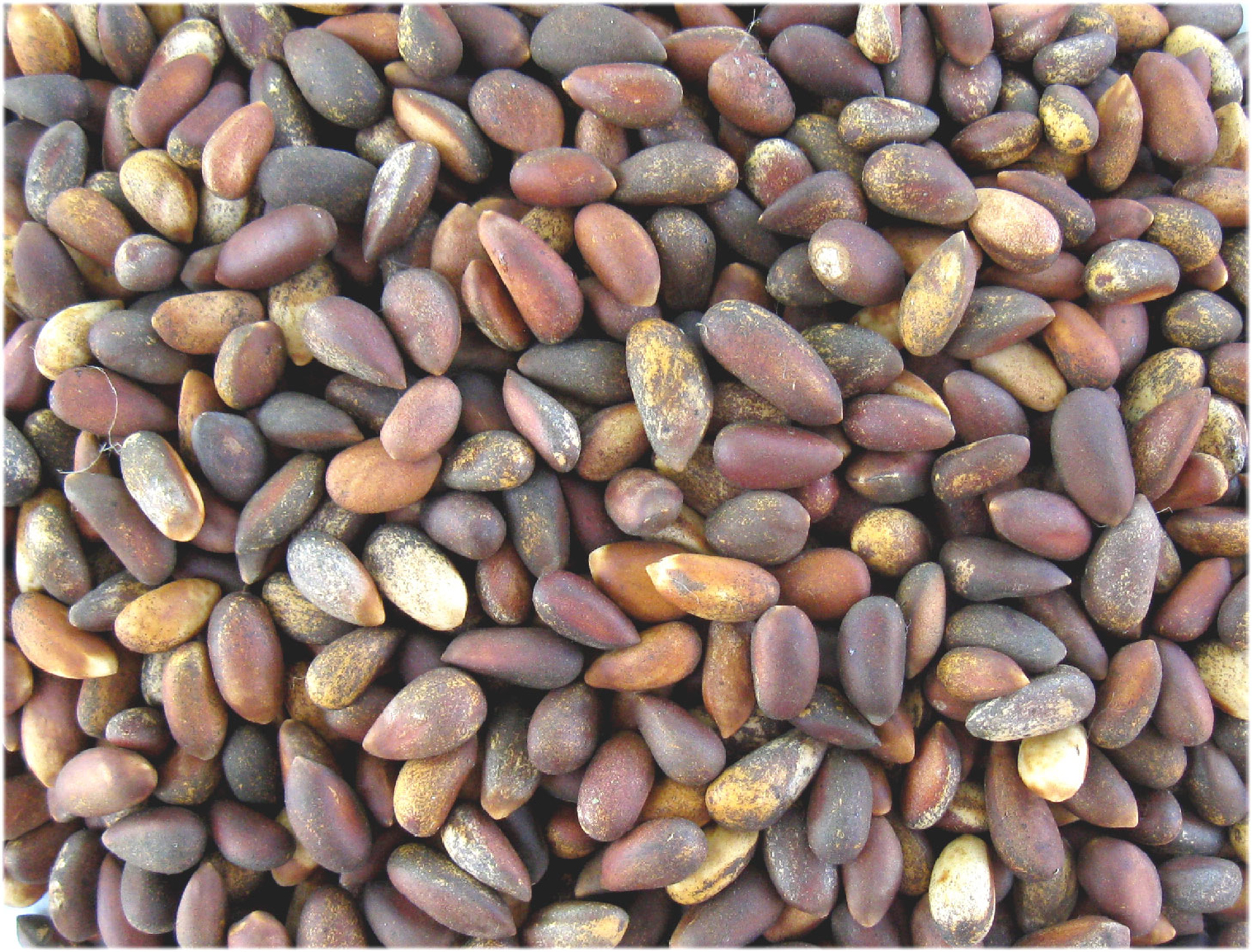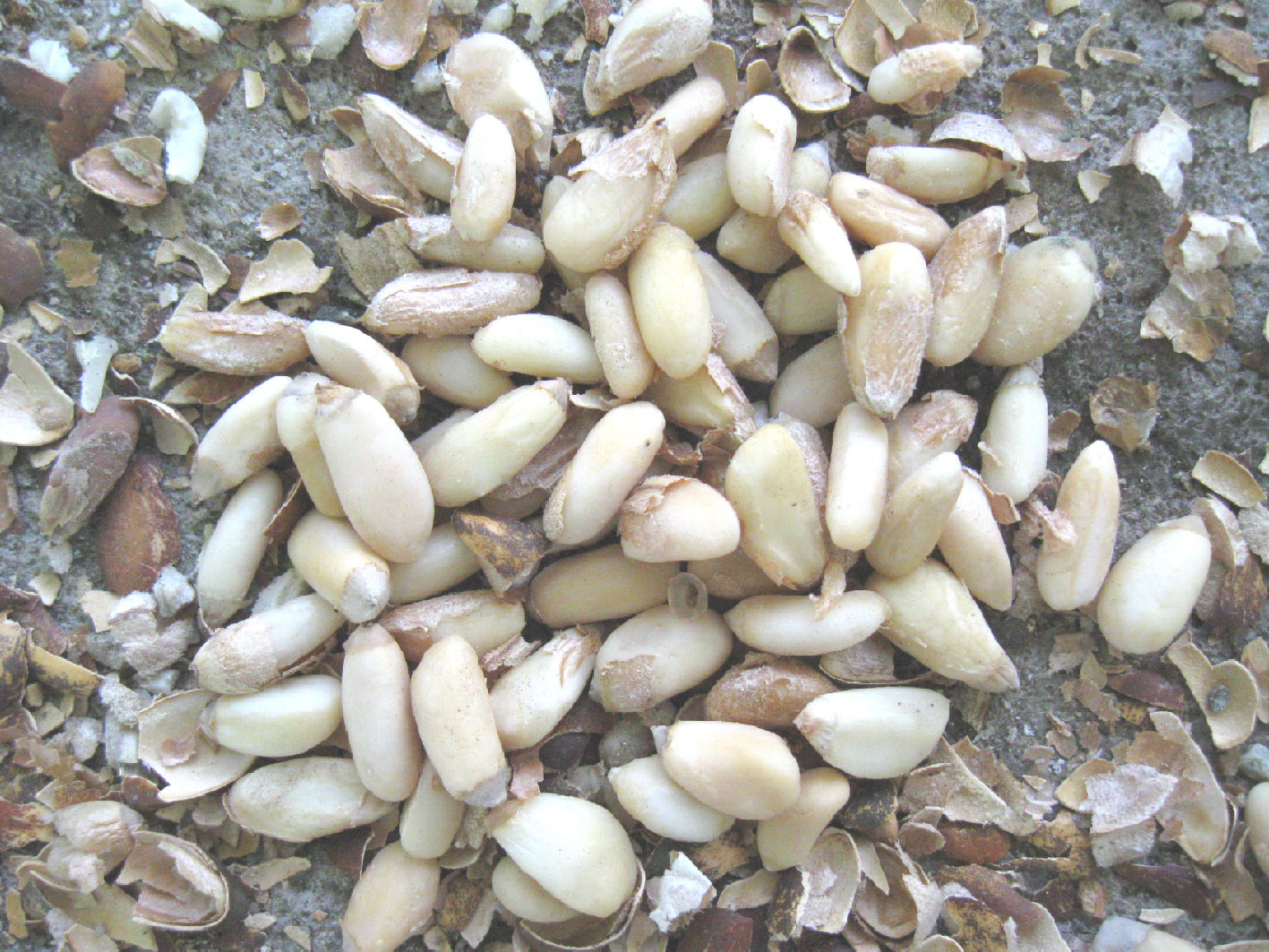The green pinyon cones were often roasted in stone-lined pits which caused them to open and release the seeds more easily. Roasting made the seeds more digestible and also helped to preserve them. Roasted seeds could be stored for as long as two years. After roasting, the pine nut shells were cracked by gently rolling them between a flat millingstone and a smaller hand-held stone. The pinyon nuts could be eaten whole or ground into a meal and mixed with water, ground meat, other seeds, or insects for added nutrition.


A primary goal of each day’s efforts for prehistoric people in
Nutritional information for Pinyon Nuts:
High fat content (about 60%)
High carbohydrate content (about 26%)
High protein content (6.5%)
About 3,170 calories per pound
Contrast that to Modern Pasta:
Low fat content (about 2%)
Moderate carbohydrate content (about 14%)
Little protein
About 1,600 calories per pound
Or Modern Brown Rice:
Low fat content (about 2%)
Moderate carbohydrate content (about 13%)
Little protein
About 1,280 calories per pound
Pinyon nuts also contain calcium, iron, magnesium, phosphorus, potassium, sodium, zinc, copper, manganese, vitamin C, thiamin, riboflavin, niacin, vitamins B-6 and B-12, vitamin A, fatty acids, and amino acids!